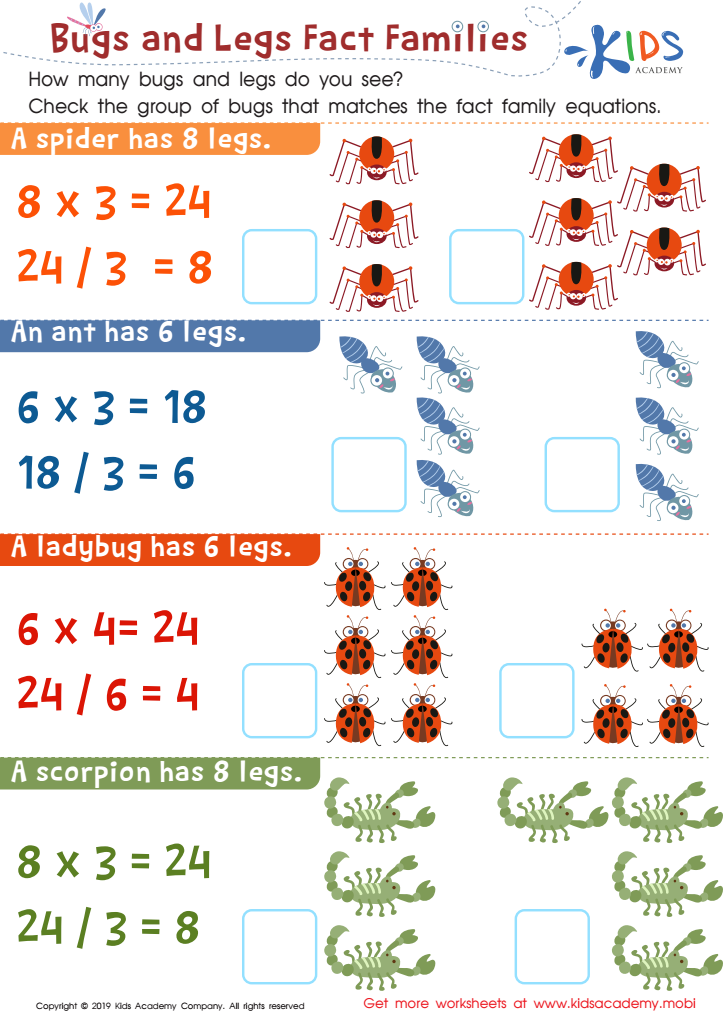Understanding fact families Math Worksheets for Ages 7-9
8 filtered results
-
From - To
Unlock your child’s mathematical potential with our "Understanding Fact Families" worksheets, specially designed for ages 7-9. Our engaging printable activities simplify essential concepts, helping young learners master addition, subtraction, and the relationships between numbers. With easy-to-follow instructions and fun exercises, kids will effortlessly grasp the idea of fact families, enhancing their math skills and confidence. Ideal for both classroom and home use, these worksheets support and reinforce math learning, ensuring your child builds a strong numerical foundation. Spark curiosity and boost proficiency in math with these expertly crafted, kid-friendly resources!


Fact Families — Add and Subtract Worksheet


Fact Families: Find Correct Family Worksheet


Fact Families Worksheet


Tortoise Fact Families Printable


Ballet Shoes Fact Family Printable


Bugs and Legs Fact Families Worksheet


Multiplication and Division Fact Families Assessment 1 Worksheet
Understanding fact families in math is fundamental for children aged 7-9 because it introduces them to the interconnectedness of basic arithmetic operations. Fact families involve sets of related addition and subtraction, or multiplication and division facts that use the same numbers. For example, in the addition/subtraction fact family for the numbers 2, 4, and 6, knowing that 2 + 4 = 6 also helps a child understand that 6 - 4 = 2 and 6 - 2 = 4.
Parents and teachers should care about this concept for several reasons. First, fact families enhance a child's number sense, allowing them to see relationships within numbers rather than viewing each operation as an isolated fact. This conceptual understanding builds a strong arithmetic foundation critical for more complex math problems.
Second, knowing fact families improves a child's problem-solving skills and math fluency. When children can quickly recall related facts, they solve problems more efficiently, reducing math anxiety and increasing confidence.
Finally, understanding these relationships in math promotes a greater interest in numerical patterns and logical thinking, crucial skills not only in mathematics but also in everyday decision-making and future learning areas. Educators and parents investing time in teaching fact families help children develop a positive attitude towards math, easing their transition into more challenging mathematical concepts.
 Assign to My Students
Assign to My Students























